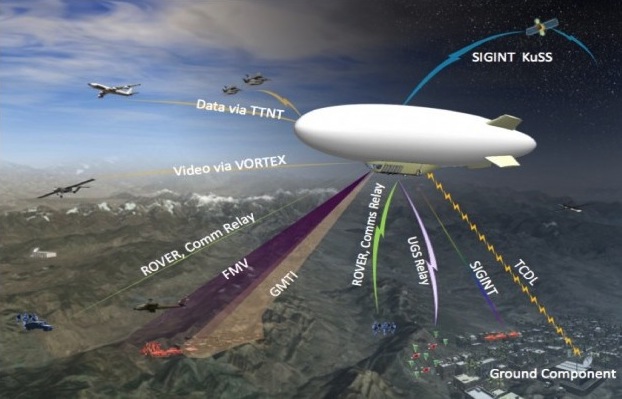An $86.2 million contract award last month reveals that the US Air Force will seek to prove if airships can replace fixed-wing aircraft on some surveillance missions over Afghanistan.
About nine months after the US Army launched its long-endurance multi-intelligence vehicle (LEMV) programme, the air force awarded defence technology start-up MAV6 a contract, Blue Devil Block 2. MAV6 chief executive David Deptula confirms that an airship will be deployed to Afghanistan in January to demonstrate a lighter-than-air vehicle with a multi-intelligence payload.
That timing coincides with the army’s plans to demonstrate the LEMV airship under a $517 million contract awarded to Northrop Grumman/Hybrid Air Vehicles last June. Deptula, who retired three months ago as the air force’s deputy chief of staff for intelligence, surveillance and reconnaissance, says the Blue Devil concept pre-dates the launch of the army programme.
He does not consider Blue Devil and LEMV as competitive programmes, but as complementary systems. Unlike the heavy-lift capability provided by LEMV’s all-new hybrid airship, Blue Devil relies on conventional airship vehicle designs. The TCOM-built airship is nearly 113m (370ft) long, and seven times the size of the Goodyear Blimp at 1.4 million cubic feet and has a payload compartment measuring 7m long by 3m wide by 2.1m high. The Air Force hopes that the extra size should give it enough fuel and helium to stay aloft for as much as a week at a time at nearly four miles up. (Most blimps float at 3,000 feet or less).
The air force will integrate both the Sierra Nevada Gorgon Stare and BAE Systems/Lockheed Martin autonomous real-time ground ubiquitous surveillance imaging system as wide-area airborne surveillance sensors (WAAS). A pallet with a ground moving target indicator payload will also be integrated, along with signals intelligence sensors. Information from the sensors will be processed by the onboard supercomputer which can then automatically slew the sensors in the right direction.
The footage can easily overwhelm the people who have to watch it (not to mention the military’s often-fragile battlefield networks). Already, 19 analysts watch a single Predator feed. Gen. James Cartwright, vice chairman of the Joint Chiefs of Staff, told a conference in November that he’d need 2,000 analysts to process the footage collected by a single drone fitted with WAAS sensors. And that’s before the upgrade to the next-generation WAAS, which uses 96 cameras and generates every hour 274 terabytes of information; it’d take 1,870 of the hard drives I’m using right now to store that much data.
That’s where the supercomputer comes in. With the equivalent of 2,000 single-core servers, it can process up to 300 terabytes per hour. So instead of just sending all the footage to the infantrymen, like most of today’s sensors, the airship’s processors will crunch the information, adding meta tags like location and time. Ground troops will query a server on the airship, which will only broadcast the stuff they’re interested in. By processing part of the data on-board, and only sending what is of interest, bandwidth requirements are reduced. The goal is to get that coordinated information down to ground troops in less than 15 seconds.
[For an update on this story on March 1, 2012, see ‘Blue Devil 2 Still Afloat‘ – Ed.]
Sources: Flight Global, Wired


After working with the Joint Stars project for many years, this seems like a great move for Northrop Grumman provided its cost effective objective. Good luck on your program.
Gregory Toth
Avionics Tech.
Greg!!!
Wish you were “onboard”?!!! Miss ya’ friend. Miss my boat and Florida too. I’m lead avionics tech here….a wonderful company and experience thus far!
Keep in touch?
-Pete